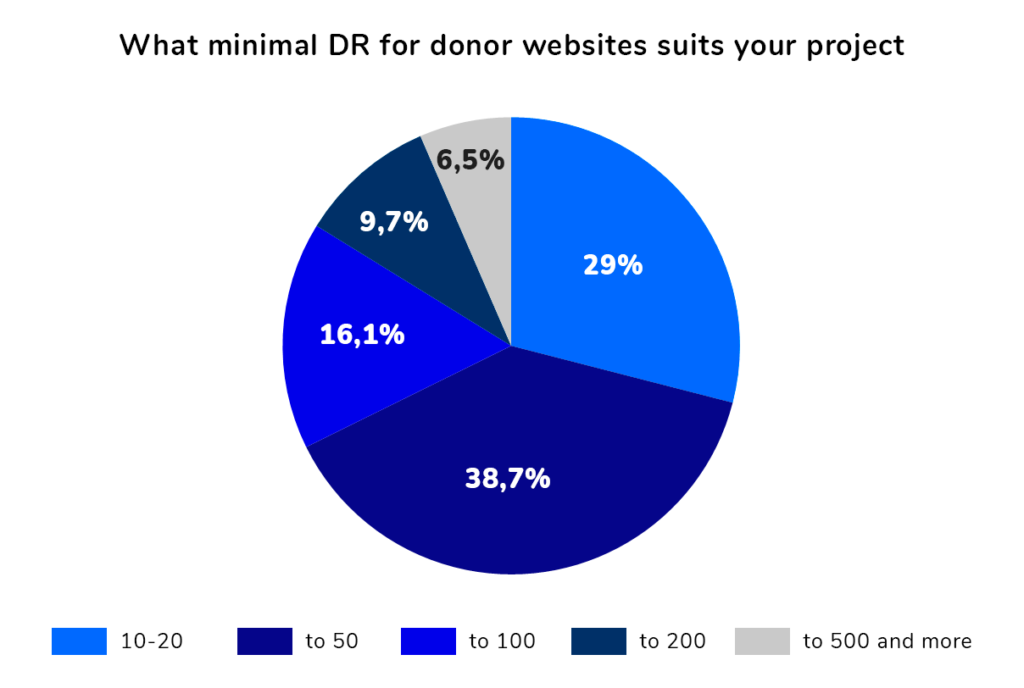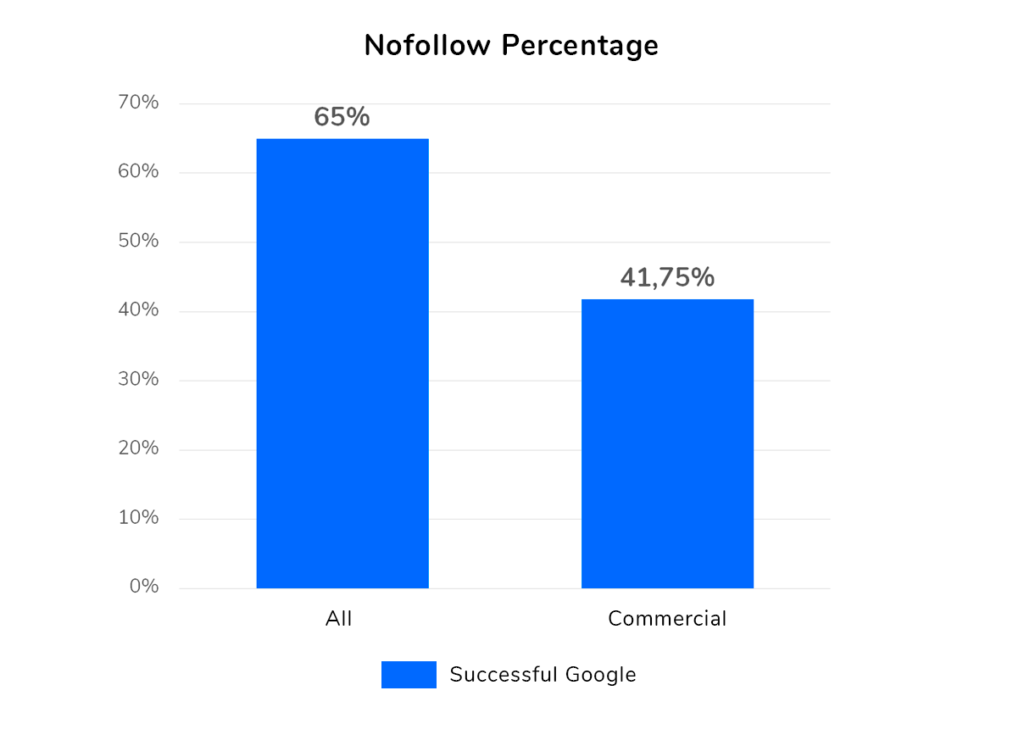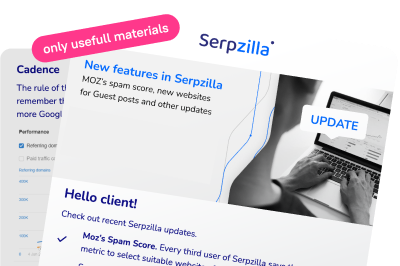External links are links to a site from other resources that form the link profile. They are also called inbound backlinks.
Why are they needed? By forming a link profile, you increase the site’s ranking for search engines, increase traffic, and attract more interested users through queries. Links from other authoritative platforms are a signal for search engines to raise your site higher in search results.
To promote to the top, links alone are not enough. It is important to optimize the resource, check it for errors that hinder indexing, conduct a usability audit, and do everything to make the site user-friendly. If this work has already been done, boldly proceed to forming a link strategy.
Incoming external links directly affect your site’s positions in search engine results. However, link promotion becomes more complicated over the years, and therefore today it is not only about expanding the link profile – many nuances must be taken into account not to harm the site and bring it to the top.
There are no immutable methods in link promotion, but there are rules that have proven effective over the years. This is especially important for promotion in Google, whose practices are more conservative and change much slower and smoother than other search engines.
Backlink placement
Usually, links are placed within the content – so that the surrounding text describes your site and talks about the services offered. Moreover, it is believed that the anchor text should be saturated with keywords. In this case, the likelihood that the user will click on it increases.
However, there are cases when a link will have high clickability even when placed in other locations:
- A large, bright button inviting the reader to familiarize themselves with additional content on the topic.
- A promising call to action at the end of the article.
- A large and noticeable link on the navigation panel.
- A sponsored banner among other sponsored banners.
Reasons for the user not to click might include:
- The link is surrounded by uninteresting and unattractive text.
- Due to CSS, it is hidden in the text and does not stand out visually.
- The anchor phrase is reduced to meaningless “Here” or “Learn more”. There’s nothing wrong with indicating to the user what awaits them upon transition. And it will be easier for Google to understand the connection between the pages.
- If your site is linked by many identical URLs under which practically identical pages on non-thematic sites were specially created, Google may ignore a significant part of them. The link environment must have value.
Links and Site Quality
Search engines are suspicious of sites that link to poor-quality content. The more useful the material on the page, the more likely a Publisher will place a link on it, and the greater its weight will be.
In assessing the usefulness of content on a page, Google also evaluates all the links that lead to it. These assessments are interdependent – if the page looks dubious, then the URLs are accordingly marked. If you aim to obtain potential links from media sites, author blogs, or influencers, assess your chances sensibly. Think in advance about how to make the best impression on the recipient and what could really interest them.
The Internet is full of low-quality content that is not interesting to users and does not bring them value. Google’s search algorithms analyze user behavior on sites and make corresponding conclusions about the quality of content. The level of such analysis by search engines is quite high – this must be taken into account when promoting a site.
There are basic criteria for useful content. Ask yourself these questions:
- Is there any intrigue that prompts the user to read your text?
- Can you feel the author’s interest in the topic, or does it seem that the text is written just for the sake of it?
- Are the illustrations relevant to the text, or do they seem random?
- Will the reader want to re-read the text at least partially?
- Does the content inspire trust, and is it sufficiently backed up by sources? Accuracy is especially important for technical topics (finance, SEO, marketing, link building) and is simply mandatory for scientific publications.
- Can the user find a more useful alternative to your content?
- Do you consider your material the best on the topic on the web? If not, what is it lacking?
- Can you link your material to others by placing links to missing content? After all, no material can and should not include all the necessary information.
- Is your content easy to read? Think about the design, lists, and other elements that are usually related to the UX sphere.
The Importance of Domain Trust
Trust, or the degree of trust in a site, grows along with quality links to it. The level of trust is important for both sites: the donor and the acceptor. The higher the trust of your target domain, the more you get from it.
This is one of the reasons why, for example, Amazon still shows excellent results despite the huge number of affiliate links from spammy sites subject to search engine penalties. A similar situation is with Wikipedia – it is linked to by dubious sites, but this does not harm it.
There are different approaches to measuring trust. You can use the Majestic Trust Flow counter. If you are satisfied with only the trust indicators according to Ahrefs, there is a risk of falling for manipulators of this parameter.

But do not buy links based only on quality metrics. Trust metrics like Ahrefs DR or Moz DA use signals from the entire domain, so it is difficult to track the quality of each specific page. It is quite possible that, relying only on these general indicators, you will place a link on a page that will not bring value to the site.
Improving Trust Through Mutual Citation
Mutual exchange of links with trustworthy sites still serves as a reliable source of trust for your resource. However, there is a risk that the site linking to you will also have links to dubious sites and spam resources. In this case, you may encounter problems.
Recommendations for SEO-specialists:
- Build not only links but also trust.
- Use natural anchor text.
- Do not abuse typical anchor text – it will turn your content into mush and give the impression that it was written by a robot, not a person.
- It is best if each anchor text (except for the brand and site name) appears in the text only once.
- Take into account the linguistic nuances of your segment of the Internet. Not all languages can boast a rich synonymy, especially when it comes to niche topics. Sometimes you can repeat yourself in anchor words, and it will not look out of place – there is no universal recipe.
Which Links Should SEO-specialists Choose
Remember: a natural link looks as if it was placed by a user, not an SEO-specialist. An ordinary user is unlikely to focus on including anchor text in the content. In addition, he may limit himself to a rather laconic message containing a link.
Links with Traffic
Strive to have them placed on pages with high ranking for several keywords important to you. Regardless of the metrics, a URL from such a page will be valuable to you.
Influence of NoFollow Links
The additional rel=”nofollow” parameter informs the robot that there is no need to transfer link weight to the page to which the link leads. Such links look the most natural, although since 2014, Google has been penalizing their spam – if there are too many such links to a site. However, since 2019, they have been taken into account in ranking, and now their importance is officially confirmed.

Adding them to the link profile is necessary to improve the ranking of the site in Google. A study of medical-themed sites conducted by the Serpzilla team shows that all sites in the top search results have a significant number of NoFollow links in their profile.
Anchor and Non-Anchor Links
SEO-specialists strive to identify patterns, for example, what should be the optimal ratio of anchor to non-anchor links in link building.
Anchor links contain keywords, commercial or informational queries: “buy,” “price,” etc. They are divided into two main types: informational and commercial.
Non-anchor links are also divided into several subtypes:
- Branded – with the name of the company or product in the anchor (e.g., “Serpzilla” or “Serpzilla”);
- With general phrases in the anchor: “Read more,” “Here,” “There,” “Learn more”;
- Direct URLs without text: https://serpzilla.com/;
- Image links.
Theoretically, anchor links are the most beneficial for attracting traffic, but if all incoming links belong to this type, it will naturally raise suspicions about their naturalness, and therefore – the risk of penalties from search engines. At the same time, the exact percentage ratio of anchor links to non-anchor ones for optimal site promotion is a subject of constant discussion among experts, who give various recommendations.
It is necessary to consider that although the search algorithms of Google and other search engines are similar to each other, they also have a number of significant differences. In particular, this manifests itself in assessing the link mass of sites – one of the key ranking factors. For example, thanks to research conducted by the Serpzilla team, the following features have been established:
- other search engines highly values URL anchors, especially for informational queries, considering such links more natural;
- Google ranks non-anchor links pretty well (with an anchor in the form of a URL) and pays attention to the number of nofollow links. At the same time, about 60-70%
If an SEO-specialist successfully calculates the appropriate ratio of anchor and non-anchor links, they can improve the site’s position in the search results of both search engines, finding a kind of “golden mean.”
More about compiling an anchor list is discussed in the chapter COMPILING AN ANCHOR LIST.
General Recommendations for Link Builders As a site grows and develops, various types of links from different sources are naturally placed on it—this should be considered in link building. Look at the top Google or other search engines results—the profile of these resources will include Guest Posts, Niche Edits, crowd-sourced links, and links from social networks. Therefore, the natural appearance of the overall link profile is much more important. More about links is discussed in the section TYPES OF LINKS.
In any case, the most universal advice for any SEO-specialist is to analyze competitors. By looking at the most successful sites in your niche, you can determine which links are most in demand and what is lacking in your project’s link profile. By adjusting your strategy to surpass your competitors, you can significantly improve your site’s positions in the search results.



